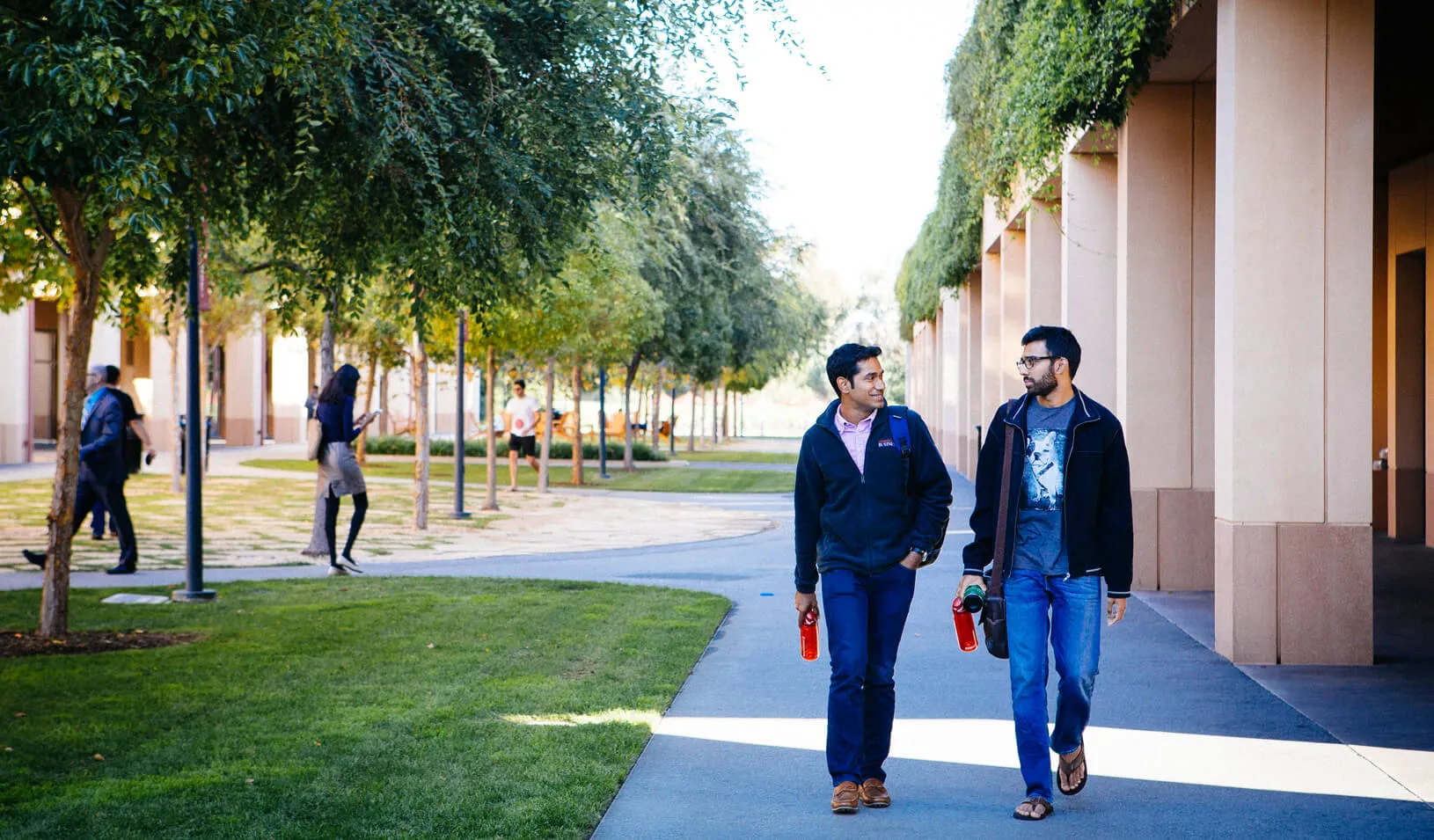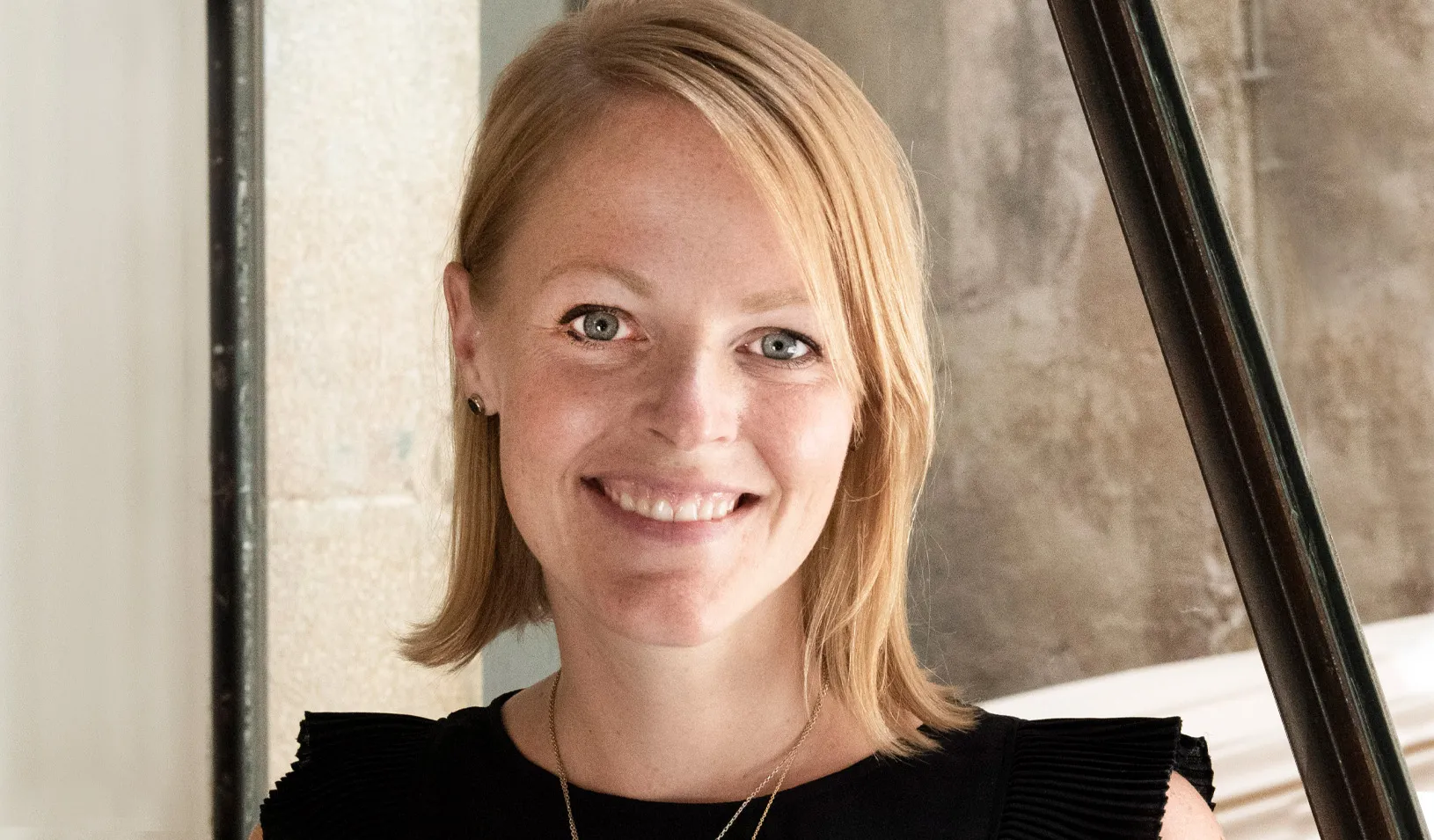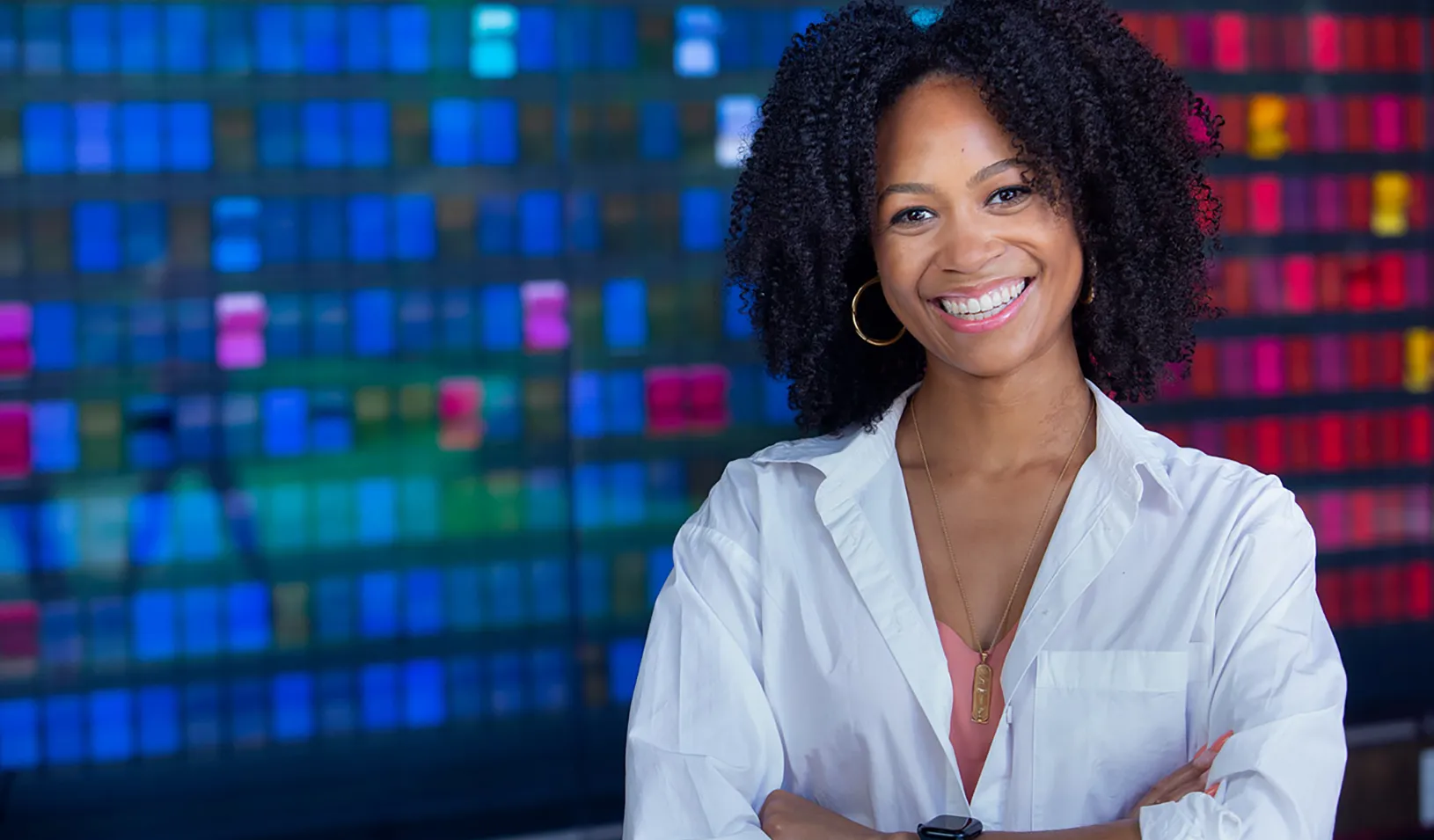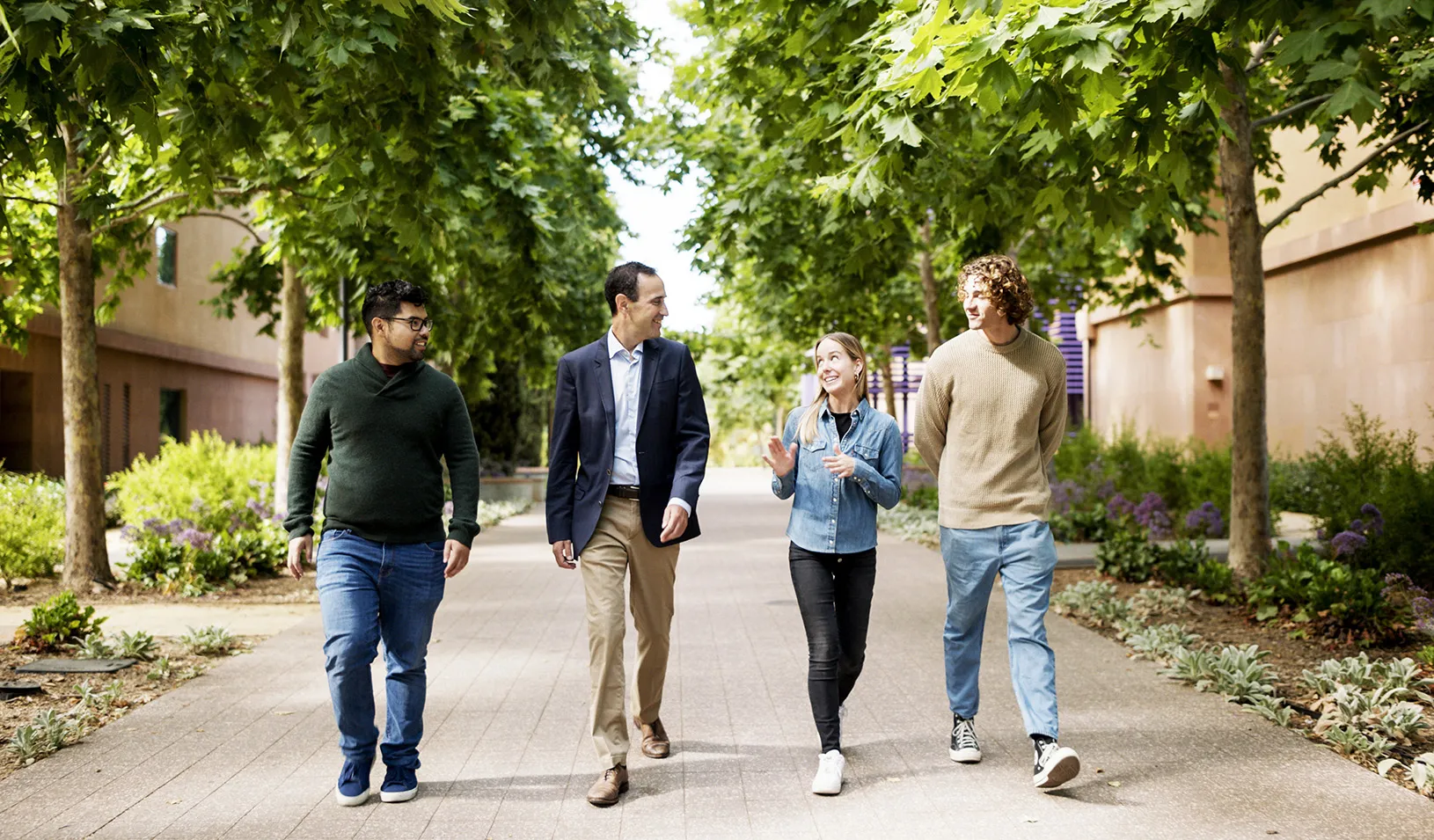From Conflict to Connection: Stanford Students Step Outside Their Comfort Zone
In the aftermath of the U.S. presidential election, a workshop series was launched to help students move beyond political conflict.
June 02, 2017

Each workshop in the lunchtime seminar series would contribute to a deceptively simple idea toward conflict resolution: finding common ground and understanding your perceived opponent. | Elena Zhukova
Stanford had never seen anything quite like it.
By the time the 2016 U.S. presidential election season culminated, shaken and disillusioned students struggled to understand the rancor and divisiveness rampant in the country. Liberal-leaning students, angry and afraid, wondered how they’d failed to recognize a groundswell of opposition voices. Conservative students felt isolated, and without a voice. The nation’s political polarization played out on campus with no relief in sight.
Sloan Fellow Alison Goldsworthy recalled the atmosphere.
“The kinds of conversations we were having on campus, and on many campuses in America, didn’t seem to welcome different points of view or try to understand what was going wrong,” she said. “The thing that really did it for me was a Trump supporter wearing a ‘Make America Great’ hat. It was after the election, and he said he felt it was the first time it was safe to wear it on campus.”
Goldsworthy, a native of Wales, knew well the angst and frustration that accompanied the Brexit debate. She was among the first to share her concerns with Bernadette Clavier, director of the Center for Social Innovation at the Graduate School of Business, who was watching campus events unfold with concern.
“It was a huge wave of emotion that took the campus by storm,” Clavier said. “We quickly realized we didn’t hear differing opinions in the first place — they weren’t among us, and if they were, they had been silenced quite a bit. We realized we needed to listen.”
Faced with an urgent need and with winter break looming, Clavier, Goldsworthy, and colleagues hit on an idea — a lunchtime seminar series with three goals: to bring in voices that had been absent on campus, to explain the intricacies of polarization, and to help students develop a point of view about civic engagement and find options for personal action. Each workshop would contribute to a deceptively simple idea: finding common ground and understanding your perceived opponent is the essence of conflict resolution.
Saumitra Jha, associate professor of political economy and a specialist in how societies maintain peace, served as faculty advisor to the project. He remembers meeting with anxious students the day after the election, when the idea for the seminar first arose.
“I’d expressed my concern that, like Brexit, we were having a change in the political tenor of speech, and a rise in hate speech,” he said, recalling the impromptu gathering. “What I really admire about Ali and the others is that they said, ‘We’ll do something about this; we’re worried as well.’ We created this series to try to understand from practitioners and policy makers, and also from the best recent research about how to move forward after political confrontation.”
The 11-session, 14-week series, quickly organized, was heavily attended by students from throughout Stanford University and on their own time. Students began by learning how differing world views can be formed, then moved on to practicing conversation skills designed to allow effective communication between opposing views. Next came workshops to teach the political, geographic, social, and cultural factors that form opinion. From there, students began learning how to use those insights to gain a better understanding of others. The series concluded with a historical and global perspective on political confrontation.
The topics and flow of the series were designed to challenge students to step outside their political comfort zone, said Stanford GSB Dean Jonathan Levin.
“This seminar series was one of the ways the Stanford GSB community responded to the divisions revealed by the elections,” he said. “One of the important things we can do is to model engagement and open-minded discussion, and our students are rising to the occasion.”
Throughout the series, students explored topics including popularism and polarization globally; the cultural and geographic differences in the United States; the changing role of media and technology in politics; and the impact of Silicon Valley’s technological progress on other regions of the world. Perhaps most importantly, they had learned and practiced empathetic listening techniques designed to allow opponents to find common ground.
“I was incredibly impressed with how our students were able to have a heated but constructive conversation about some very difficult issues,” Jha said. “Everyone came out with a better understanding of a position other than their own.”
What began as a response to student need became an unexpected opportunity to expand the horizons of tomorrow’s leaders, Bernadette Clavier said.
“We’re trying to get our future business leaders to understand different perspectives so they can factor those into whatever decision they’ll make in the future,” she said. “While it’s still early days, we’ve already seen unprecedented interest in civic engagement and commitment.
“The response has been phenomenal.”
Here are highlights of “Moving Forward After Political Confrontation” discussion sessions:
The Role of Media in Political Polarization
This session featured Stanford economics professor and 2014 John Bates Clark Medal winner Matthew Gentzkow. While the United States has suffered division before, the current climate seems deeper and more intractable, he asserts, because some of our democratic institutions and frameworks, such as the free press, are threatened. Politicians, and to some extent the electorate, are showing an increased tendency to polarize into separate camps, but this is due to their feelings about their opponents rather than about issues. Today’s media may sometimes seem partisan and unreliable, but that phenomenon isn’t new; newspapers historically have shown partisan coverage. The circulation and viewing of “fake news” today is likely less extensive than reported but serves as a reminder that an independent, competitive press remains vital to building and maintaining a democracy.
The Art of Difficult Conversations
Students began learning how to constructively converse with someone who holds opposing views. Led by John Helding, (MBA ’86) a facilitator and teaching assistant in the Stanford GSB Interpersonal Dynamics Program since 2000, participants learned to begin a conversation with curiosity and the goal of understanding an opposing viewpoint without rancor. Helding followed up with the importance of avoiding assumptions, focusing on shared needs rather than how to achieve those needs, expressing vulnerability, and making sure the other person feels heard. All students practiced the techniques and, in an anthropological twist, a number of student volunteers were chosen to hold extended conversations with a person committed to an opposing political viewpoint. Under the coordination of Arbuckle Leadership Fellow Sebastian Dawes (MBA ’17), the results of those conversations were shared and discussed with the group over the course of the workshop series.
U.S. Political Geography
Stanford political science professor Jonathan Rodden , author of the prize-winning book Hamilton’s Paradox: The Promise and Peril of Fiscal Federalism, explained the geographic polarization of the U.S. electorate. Beginning with the New Deal era, the country has experienced a strong correlation between population density and voting: as you move from a sparsely inhabited area to one more densely populated, you move from a Republican place to a Democratic place. This relationship, he says, is true not only of the country as a whole, but also of states, counties, and even precincts. Our system of two antagonistic parties is far from ideal since an election with two choices inevitably leads to more polarization than one with more options.
U.S. Elections Post-Mortem
Podcast producer and Sloan Fellow Stephen Reardon interviewed Stanford political economy professor Neil Malhotra on topics ranging from American values and national security to an analysis of the early days of the Trump administration. The administration’s early and problematic executive order targeting immigration, Malhotra said, may be a move to fundamentally change the country’s immigration policy to something resembling Canada, where entrance is based more on what skill and value to the economy the immigrant offers, rather than factors such as family reunification. Support for such changes could be strong among voters who are questioning the value of immigration relative to their own lives. The debate between long-held American values and institutions vs. national security will continue as some begin to question the value of those very institutions.
Making Sense of America’s Political Divide
Cultural psychologist Alana Conner, coauthor of Clash – How to Thrive in a Multicultural World, described how the very real cultural differences between northern and southern voters can lead to conflict. Southerners, she said, historically embrace the interdependence of family, friends, and community members, and highly value the opinion of others. Northerners more commonly value individualism, uniqueness, and the assumption that everyone is equal. These cultural differences can contribute to north-south clashes, as well as conflict between working class/rural/suburban conservatives and middle class/urban liberals. Recognizing such cultural differences, avoiding assumptions, and careful listening can build a foundation for mutual understanding.
Technology with or vs. Humanity?
Leading futurist Gerd Leonhard, founder and CEO of The Futures Agency and a specialist in digital Darwinism and the challenges of digital transformation, discussed the exponential progress of technology, the increasingly symbiotic relationship between man and machine, and what he sees as a worrisome lack of political foresight and regulation to deal with such developments. The central challenge of the 21st century, he said, will be learning to coexist safely and ethically with intelligent machines that recognize no ethical boundaries and which, in the wrong hands, pose a serious threat. Governments must respond to the need – and challenge — of defining the correct balance between rapidly advancing technology and humanity’s best interests. The endless progress and innovation taken for granted in areas like Silicon Valley, he said, may be leading the world in a direction not everyone wants.
Non-Verbal Communication, Power, Politics, and Reconciliation
The 2017 election season wasn’t all about talk, says Dana Carney, a UC Berkeley Barbara and Gerson Bakar Faculty Fellow and specialist in nonverbal behavior and communication. It was also about the power of behavior and the electorate’s — perhaps unconscious — response to it. Voters often are willing to overlook anger, aggressiveness, and even some unethical behavior to select a leader they perceive as willing to do anything to keep them safe, Carney said. Humans of any political viewpoint also generally prefer to make simple cognitive connections that fit with already held stereotypes. In 2017, many voters recognized Donald Trump’s name, saw him consistently position himself as a winner, and were attracted to the overwhelming confidence he displayed, making it easy for them to see their candidate as president, and vote for him.
A Facilitated Conversation with Underrepresented Voters; How to Move Forward Together
Students had a chance to use their training in difficult conversations during this dynamic panel discussion featuring Charlie Kirk, founder and executive director of Turning Point USA, who had traveled with Donald Trump Jr. and Eric Trump during the campaign to engage millennials; and Katherine Vasconez, an outspoken supporter of President Trump who held senior roles in the Republican group at her alma mater, USC, and is now director of legal affairs at the successful startup Gizmo Beverages. Students and panelists covered topics including the perceived rise of anti-conservative views at U.S. universities; the importance of seeking out multiple news sources for information; President Trump’s treatment of women; and the possibility of increased political discussion between opposing factions in the United States. Speakers told their own stories of political change acknowledging that, with time and experience, comes the possibility of evolving and expanding viewpoints.
Lessons from the Northern Ireland Peace Process
Global conflict resolution was the topic presented by Quintin Oliver, conflict resolution and referendum specialist who lived through the “Troubles” in Northern Ireland, and led the cross-party “YES” campaign in the subsequent referendum. His experiences working for peace in Cyprus, Colombia, Kosovo, Israel/Palestine, and Uganda have taught him that peace builders make progress in a number of ways, such as working to understand their opponents, avoiding simplistic answers to complex policy issues, separating rational issues from emotional ones, and managing a range of competing interests and needs that may be economic, social, or cultural. Understanding the recurring dynamics of human behavior can help avoid the creation of chasms between adversaries, he said.
To Protest or Not to Protest
When events inspire citizens to protest, how do you harness the power of nonviolent civil disobedience and make it effective? Saumitra Jha uses the example of India’s struggle for democratic self-rule and the country’s subsequent decolonization to break down the intricacies of nonviolent civil disobedience. Nonviolent protests can be effective, but require a large and organized mobilization of participants whose leaders and core members are committed to avoiding the use of violence, even in the face of provocation, and even if it means turning away some participants. Such protests must also take place in a strategic location, humanize the event through the use of the media, and occur in front of an audience that can provide negative consequences for anyone trying to violently suppress the protest. Such movements will gain traction if they occur during a pivotal moment in history, or include a platform or goal that’s meaningful to people across dividing lines such as race, ethnicity, and socioeconomic status.
Lessons From a Global Conflict
Oeindrila Dube, Philip K. Pearson Professor of Global Conflict Studies, University of Chicago, Harris School of Public Policy, is no stranger to political tension. In this final session, students learned of work being done in Sierra Leone to determine if truth and reconciliation programs are helpful either to individuals or communities following conflict and war. Results are mixed. Programs that encourage victims to testify about their ordeal and perpetrators in order to seek forgiveness may provide some societal benefit but can be psychologically painful for victims.
— By Beth Jensen
For media inquiries, visit the Newsroom.
Explore More
Erin Nixon Joins Stanford GSB as Assistant Dean of Admissions

Nia Rose Froome, MBA ’23: Making Local, Fresh Food Available for All

New Research Fund Promotes Responsible Leadership for the Next Century
